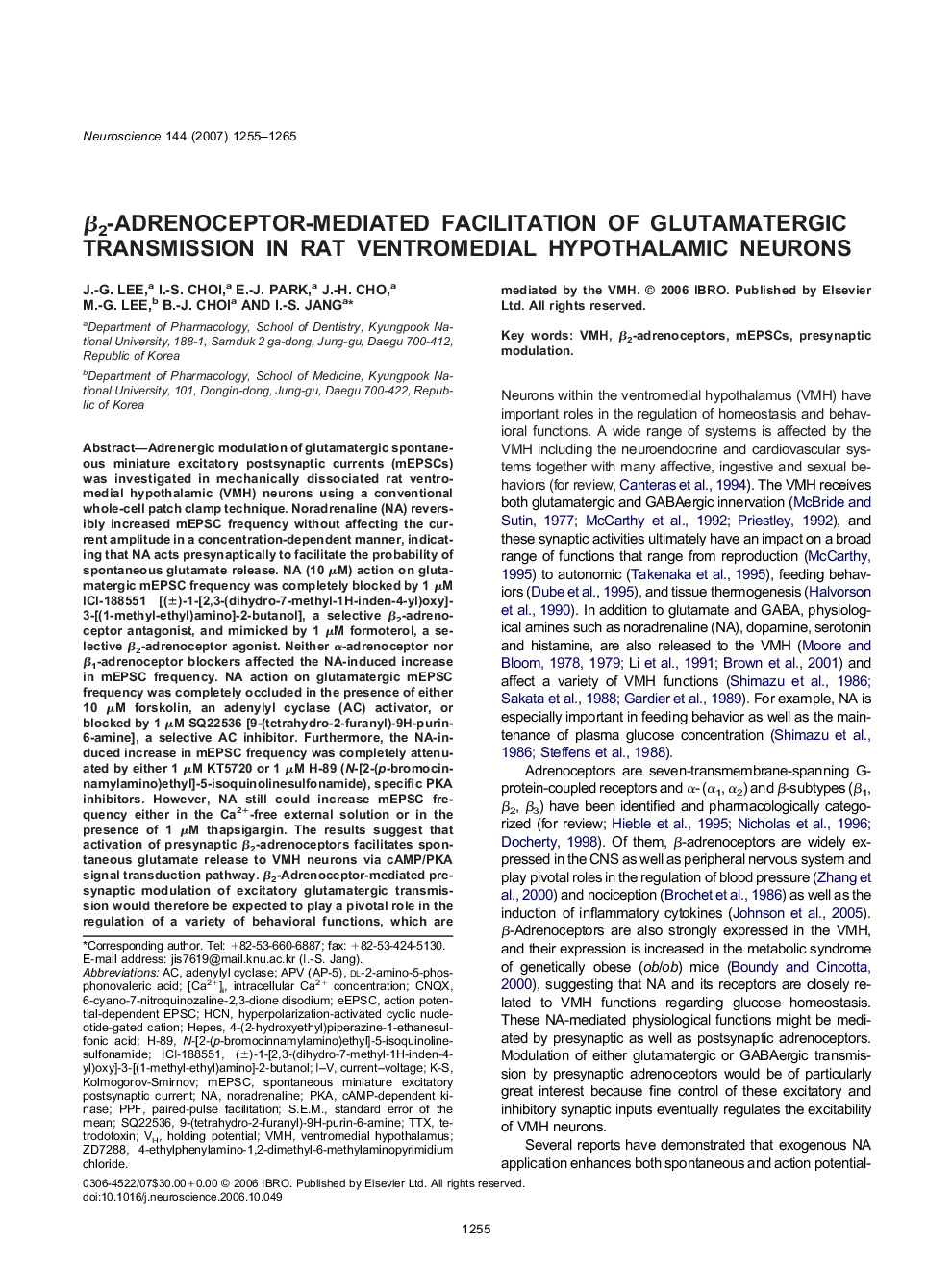| Article ID | Journal | Published Year | Pages | File Type |
|---|---|---|---|---|
| 4341226 | Neuroscience | 2007 | 11 Pages |
Abstract
Adrenergic modulation of glutamatergic spontaneous miniature excitatory postsynaptic currents (mEPSCs) was investigated in mechanically dissociated rat ventromedial hypothalamic (VMH) neurons using a conventional whole-cell patch clamp technique. Noradrenaline (NA) reversibly increased mEPSC frequency without affecting the current amplitude in a concentration-dependent manner, indicating that NA acts presynaptically to facilitate the probability of spontaneous glutamate release. NA (10 μM) action on glutamatergic mEPSC frequency was completely blocked by 1 μM ICI-188551 [(±)-1-[2,3-(dihydro-7-methyl-1H-inden-4-yl)oxy]-3-[(1-methyl-ethyl)amino]-2-butanol], a selective β2-adrenoceptor antagonist, and mimicked by 1 μM formoterol, a selective β2-adrenoceptor agonist. Neither α-adrenoceptor nor β1-adrenoceptor blockers affected the NA-induced increase in mEPSC frequency. NA action on glutamatergic mEPSC frequency was completely occluded in the presence of either 10 μM forskolin, an adenylyl cyclase (AC) activator, or blocked by 1 μM SQ22536 [9-(tetrahydro-2-furanyl)-9H-purin-6-amine], a selective AC inhibitor. Furthermore, the NA-induced increase in mEPSC frequency was completely attenuated by either 1 μM KT5720 or 1 μM H-89 (N-[2-(p-bromocinnamylamino)ethyl]-5-isoquinolinesulfonamide), specific PKA inhibitors. However, NA still could increase mEPSC frequency either in the Ca2+-free external solution or in the presence of 1 μM thapsigargin. The results suggest that activation of presynaptic β2-adrenoceptors facilitates spontaneous glutamate release to VMH neurons via cAMP/PKA signal transduction pathway. β2-Adrenoceptor-mediated presynaptic modulation of excitatory glutamatergic transmission would therefore be expected to play a pivotal role in the regulation of a variety of behavioral functions, which are mediated by the VMH.
Keywords
Related Topics
Life Sciences
Neuroscience
Neuroscience (General)
Authors
J.-G. Lee, I.-S. Choi, E.-J. Park, J.-H. Cho, M.-G. Lee, B.-J. Choi, I.-S. Jang,
